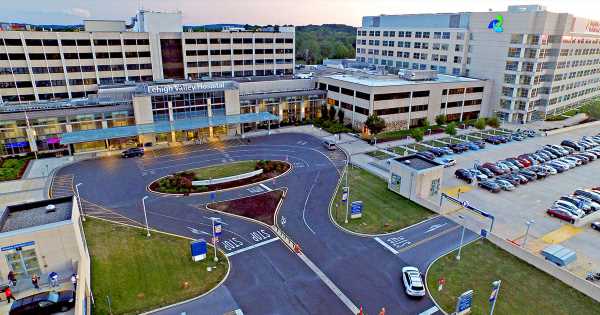Photo: Lehigh Valley Health Network
Like many health systems, Allentown, Pennsylvania-based Lehigh Valley Health Network had been facing the problem of long wait times in its emergency departments.
To confront the problem, Lehigh Valley began using telehealth and telecommunications technologies to mobilize resources to optimize a patient’s waiting time – while reducing the number of patients leaving the ED without being seen.
Virtual nurse and virtual doc triage
To make this happen, the health system implemented a virtual nurse and virtual physician triage program designed to get patients moving through the ED process sooner rather than later. In this process, the patients are virtually triaged with appropriate tests being ordered and often completed prior to the patient being roomed in the ED.
“The audio/video connections for this service were built internally many years ago, with multiple technologies in the mix,” noted Joe Tracy, vice president, connected care and innovation, air products center for connected care and innovation, at Lehigh Valley.
“The goals were to facilitate the care of emergency patients by speeding up the door-to-triage time, lowering ED length of stay as appropriate, enhancing the patient’s experience and satisfaction level, and making sure all patient data lands in the patient’s EHR,” he continued. “We also can add others to the virtual triage encounter as appropriate – for example, spoken language and sign language interpreters.”
“This gets needed services started sooner and often completed before the patient is roomed in the ED.”
Joe Tracy, Lehigh Valley Health Network
Having done this work for nearly 30 years, Tracy does not think of the technology as “telemedicine technology.” Rather, he said it consists of telecommunication technologies, coupled in some instances with FDA-approved medical instruments.
Much-improved technology
“This combination of technologies allows providers to better assess patients than they did in the past over a blind telephone call,” he explained. “These technologies also eliminate geographic distances, reduce disparities in terms of access to services, and provide valuable services to patients, especially in underserved rural and urban areas.
“In the case of the Lehigh Valley ED triage programs, a nurse, nurse practitioner or physician in one central location can triage patients virtually, whether those patients are in our urban or rural emergency departments,” he continued. “This gets needed services started sooner and often completed before the patient is roomed in the ED.”
Workflows were developed to mirror, as closely as possible, the triage process that was done prior to implementation. From a central location, the nurses and physicians use the telecommunication systems (interactive audio and video) that were developed internally years ago, using commercially available products.
Triaged patients often are sent for testing (for example, labs, imaging, etc.) in advance of being roomed and seen by an on-site ED physician. The telecommunication technologies are separate from the EHR in this case, but documentation still takes place within the EHR, as if the patient were being triaged in-person.
“In short, the telecommunication technologies that support telehealth are used side-by-side with our EHR,” Tracy said.
Gathering key stakeholders
To get the ball rolling, Tracy and others engaged a group of key stakeholders and then conducted small-scale tests to quickly determine the best workflow model for the environment. The tests included physicians, nurses, technicians, scribes, EKG techs, etc., to help get to the final model.
Lehigh Valley has seen a reduction in the percentage of patients leaving without being seen.
For others moving into telemedicine or looking to enhance existing programs, Tracy offers a wide variety of advice:
Work from the standpoint that telehealth is a clinical program that is supported by technology. There probably isn’t anything a technology team can’t build these days, but if it is not supported by the clinical staff, the program will not be successful.
Do your homework and learn from the lessons of others. Most programs today simply build upon programs and technologies that have been in place for years. For instance, the Hospital @ Home programs today are building upon structures that were developed for home care and remote patient monitoring years ago. So, learning from those that have gone before you is important.
Access the leadership of your regional federally funded Telehealth Resource Center. They have a wealth of information and can help you connect with people who may have operationalized a program that you are wanting to develop and implement.
Consider your options around building a service versus buying it. In today’s financial climate, your CFO and other executives in your organization will most likely want to see the comparison.
It also takes a village to create these programs. So, make sure you involve key stakeholders as you move forward. This includes the physicians, nurses, other providers, IT staff, billing staff, legal/regulatory staff, your medical staff office, nursing administration, finance, etc.
Develop metrics you want to capture in advance (for example, quality, satisfaction, P&L, utilization, productivity, efficiencies, etc.).
Finally, Tracy advised to not let perfect be the enemy of the good as you develop your program. At some point you have to hit the go button – and then make adjustments along the way. This allows you to crawl, walk, run and move a program from good to great.
Follow Bill’s HIT coverage on LinkedIn: Bill Siwicki
Email the writer: [email protected]
Healthcare IT News is a HIMSS Media publication.
Source: Read Full Article

